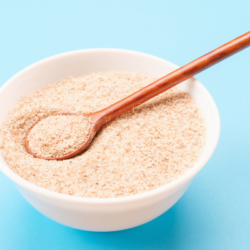The management of conditions such as non-erosive gastro-oesophageal reflux disease (GERD) and painful functional dyspepsia is a major focus of medical practice. This review highlights the role of NeoBianacid compared with Omeprazole, the standard therapy for these conditions.
[ Disclaimer: The information in this article is provided for general information purposes only and should not be considered as a substitute for professional medical advice. Non-erosive Gastroesophageal Reflux Disease (GERD) and Functional Painful Dyspepsia are medical conditions that require proper diagnosis and treatment by a qualified healthcare professional. Products such as NeoBianacid are medical devices and are not a substitute for comprehensive medical treatment and should only be obtained on the recommendation of a healthcare professional. Any decision regarding their use should be made in consultation with a qualified healthcare professional. The information presented in this article is based on knowledge available up to the date of publication and may not reflect the latest scientific advances. It is imperative to consult a doctor or other qualified healthcare professional before starting, modifying or interrupting any medical treatment. Under no circumstances should the information contained in this article be used to diagnose or treat a medical condition. ]
What is Non-Erosive Gastroesophageal Reflux Disease (GERD)?
Non-Erosive Gastroesophageal Reflux Disease (GERD) is a medical condition characterised by the reflux of acidic contents from the stomach into the oesophagus, without the presence of endoscopically detectable oesophageal lesions or erosions.
What are the symptoms of GERD?
The symptoms most commonly associated with non-erosive GERD include heartburn, throat irritation and halitosis (bad breath). These symptoms may be chronic or episodic, and their intensity varies from person to person.
Etiology of non-erosive GERD
The aetiology of non-erosive GERD is multifactorial and may include factors such as inappropriate eating habits, obesity, stress and dysfunction of the lower oesophageal sphincter. The lower oesophageal sphincter normally prevents the reflux of gastric contents into the oesophagus, but can be weakened for a variety of reasons.
What is Painful Functional Dyspepsia?
Painful functional dyspepsia is a digestive disorder that manifests itself through a series of clinical signs. The most common of these are abdominal pain, abdominal distension and nausea. It is important to note that these symptoms occur in the absence of any identifiable organic pathology.
Symptoms of Painful Functional Dyspepsia
Typical symptoms include pain in the upper abdominal region, often described as a burning or pulling sensation. Meteorism, a form of abdominal distension, and retching are also common.
Etiology of Functional Painful Dyspepsia
The aetiology of painful functional dyspepsia is complex and not yet fully understood. Dietary factors, such as the consumption of spicy or fattyfoods, may play a role, as may bacterial infections such as Helicobacter pylori. Other factors such as stress or a history of abdominal surgery may also contribute to this condition.
Omeprazole: Profile and Mechanism
Omeprazole is a proton pump inhibitor (PPI) commonly used to treat GERD and dyspepsia.
How it works
It works by inhibiting the enzyme that regulates acid secretion in the gastric cavity.
Side effects
Notable side effects include headache, nausea and diarrhoea.
Gastric disorders, such as gastric acidity, gastro-oesophageal reflux disease (GERD) and dyspepsia, can have a significant impact on quality of life. While these symptoms are commonly treated with proton pump inhibitors such as Omeprazole, alternatives such as NeoBianacid offer potentially more natural treatment approaches with fewer side effects.
How does NeoBianacid work?
NeoBianacid is a medical device formulated from functional substances such as Poliprotect®, a synergistic molecular complex of polysaccharides derived from aloe veramalva sylvestris and Althaea officinalis, as well as minerals such as calcium carbonate and nahcolite. The product is also enriched with flavonoids from Matricaria recutita and Glycyrrhiza glabra.
It works by forming a protective film on the gastrointestinal mucosa, providing a barrier against gastric acidity and acid reflux. This mode of action is distinguished by its speed and effectiveness in treating symptoms associated with gastric acidity, GERD and dyspepsia.
What are the advantages of NeoBianacid compared with Omeprazole?
Clinical studies have shown that NeoBianacid has similar efficacy to Omeprazole in treating the symptoms of GERD and dyspepsia. However, it offers the added advantage of not disturbing the intestinal microbiota. It also minimises the need for rescue therapies, which may be beneficial in the long-term management of these gastric disorders.
Dosage and Warnings
NeoBianacid is available in tablet and granule sachets. The recommended dosage varies according to the nature and severity of the symptoms. For the treatment of GERD, one tablet or sachet should be taken after the main meals and before bedtime. For dyspepsia, one tablet or sachet should be taken after a meal.
It is important to note that NeoBianacid can be taken for long periods and is also suitable for children over the age of 6. However, it should not be used in the event of hypersensitivity or allergy to any of its ingredients. It is also recommended that you consult a doctor if symptoms persist.
Methodology of the Comparative Study
The analysis was carried out according to rigorous criteria and involved 275 patients. It was organised into three phases with distinct objectives.
Clinical results
NeoBianacid showed comparable efficacy to Omeprazole at different time points in the study and also reduced the rebound effect of PPIs.
Interpretation and outlook
These findings suggest new therapeutic directions in the treatment of GERD and painful functional dyspepsia.
Selection between NeoBianacid and Omeprazole
The clinical decision will depend on several parameters, including side effects and the specific needs of each patient.
Advantages and limitations
NeoBianacid offers the advantage of not altering the intestinal microbiota, unlike Omeprazole.
FAQ
What is gastro-oesophageal reflux disease (GERD)?
Gastro-oesophageal reflux disease (GERD) is a gastrointestinal disorder in which stomach contents back up into the oesophagus, causing symptoms such as heartburn and throat irritation.
What are the symptoms of GERD?
Typical symptoms include heartburn, throat irritation and halitosis. Some patients may also experience a chronic cough or dental problems.
What is painful functional dyspepsia?
This is a syndrome that brings together upper digestive symptoms, such as abdominal pain, bloating and nausea, without a precise organic cause being identified.
What causes these conditions?
The causes can vary, ranging from an inadequate diet to anatomical problems such as a hyatal hernia or stomach ulcer.
How does Omeprazole work?
Omeprazole is a proton pump inhibitor (PPI) that reduces the production of gastric acid by blocking a specific enzyme in the parietal cells of the stomach.
What are the possible side effects of Omeprazole?
Common side effects include headache, nausea and diarrhoea. Long-term use can lead to electrolyte imbalances and alteration of the intestinal microbiota.
What is NeoBianacid?
NeoBianacid is a medical device made from natural substances for the treatment of GERD and painful functional dyspepsia.
How does NeoBianacid work?
It creates a protective barrier on the mucosa of the gastrointestinal tract, helping to prevent the harmful effects of stomach acid.
What studies support the effectiveness of NeoBianacid?
Clinical studies show that NeoBianacid is as effective as Omeprazole in controlling symptoms, but with benefits such as better preservation of the intestinal microbiota.
How do I choose between NeoBianacid and Omeprazole?
The choice between the two treatment options should be based on several factors, including potential side effects, the patient’s individual needs and the advice of the healthcare professional.
When should I consult a doctor?
If symptoms persist or worsen despite treatment, a medical consultation is imperative for a precise diagnosis and an appropriate treatment plan.
Sources :
https://journals.lww.com/ajg/Fulltext/9900/Poliprotect_vs_Omeprazole_in_the_Relief_of.781.aspx







